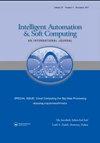Classification Framework for COVID-19 Diagnosis Based on Deep CNN Models
IF 2
4区 计算机科学
Q2 Computer Science
引用次数: 5
Abstract
Automated diagnosis based on medical images is a very promising trend in modern healthcare services. For the task of automated diagnosis, there should be flexibility to deal with an enormous amount of data represented in the form of medical images. In addition, efficient algorithms that could be adapted according to the nature of images should be used. The importance of automated medical diagnosis has been maximized with the evolution of COVID-19 pandemic. COVID-19 first appeared in China, Wuhan, and then it has exploded in the whole world with a very bad impact on our daily life. The third wave of COVID-19 in the third world is really a disaster in current days, especially with the emergence of the delta variant of COVID-19 that is widespread. Required inspections should be carried out to monitor the COVID-19 spread in daily life and allow primary diagnosis of suspected cases, and long-term clinical laboratory monitoring. Healthcare professionals or radiologists can exploit AI (Artificial Intelligence) tools to quickly and reliably identify the cases of COVID-19. This paper introduces a DCNN (Deep Convolutional Neural Network) framework for chest X-ray and CT image classification based on TL (Transfer Learning). The objective is to perform multi-class and binary classification of the images in order to determine pneumonia and COVID-19 case. The TL is feasible, when using a small dataset by transferring knowledge from natural image classification to medical image classification. Two types of TL are used. The first type is fine-tuning of the DenseNet121, Densenet169, DenseNet201, ResNet50, ResNet152, VGG16, and VGG19 models. The second type is deep tuning of the LeNet-5, AlexNet, Inception naive v1, and VGG16 models. Extensive tests have been carried out on datasets of chest X-ray and CT images with different training/testing ratios of 80%:20%, 70%:30%, and 60%:40%. Experimental results on 9,270 chest X-ray ray and 2,762 chest CT images acquired from different institutions show that the TL is effective with an average accuracy of 98.49%.基于深度CNN模型的COVID-19诊断分类框架
基于医学图像的自动诊断是现代医疗保健服务中一个非常有前途的趋势。对于自动诊断任务,应该具有处理以医学图像形式表示的大量数据的灵活性。此外,还应使用能够根据图像性质进行调整的高效算法。随着新型冠状病毒感染症(COVID-19)疫情的发展,医疗诊断自动化的重要性得到了最大化的体现。新冠肺炎首先出现在中国武汉,然后在全世界爆发,对我们的日常生活产生了非常恶劣的影响。第三世界的第三波新冠肺炎疫情在当前确实是一场灾难,特别是在新冠病毒广泛传播的情况下。应开展必要的检查,监测COVID-19在日常生活中的传播情况,对疑似病例进行初步诊断,并进行长期的临床实验室监测。医疗保健专业人员或放射科医生可以利用AI(人工智能)工具快速可靠地识别COVID-19病例。介绍了一种基于迁移学习(TL)的胸片和CT图像分类的深度卷积神经网络(DCNN)框架。目的是对图像进行多类和二值分类,以确定肺炎和COVID-19病例。通过将自然图像分类的知识转移到医学图像分类中,在小数据集上是可行的。使用了两种类型的TL。第一种是对DenseNet121、Densenet169、DenseNet201、ResNet50、ResNet152、VGG16、VGG19型号进行微调。第二种类型是LeNet-5、AlexNet、Inception naive v1和VGG16模型的深度调优。对训练/测试比例分别为80%:20%、70%:30%和60%:40%的胸部x线和CT图像数据集进行了大量的测试。对9270张不同机构的胸部x线片和2762张胸部CT图像的实验结果表明,TL的平均准确率为98.49%,是有效的。
本文章由计算机程序翻译,如有差异,请以英文原文为准。
求助全文
约1分钟内获得全文
求助全文
来源期刊

Intelligent Automation and Soft Computing
工程技术-计算机:人工智能
CiteScore
3.50
自引率
10.00%
发文量
429
审稿时长
10.8 months
期刊介绍:
An International Journal seeks to provide a common forum for the dissemination of accurate results about the world of intelligent automation, artificial intelligence, computer science, control, intelligent data science, modeling and systems engineering. It is intended that the articles published in the journal will encompass both the short and the long term effects of soft computing and other related fields such as robotics, control, computer, vision, speech recognition, pattern recognition, data mining, big data, data analytics, machine intelligence, cyber security and deep learning. It further hopes it will address the existing and emerging relationships between automation, systems engineering, system of systems engineering and soft computing. The journal will publish original and survey papers on artificial intelligence, intelligent automation and computer engineering with an emphasis on current and potential applications of soft computing. It will have a broad interest in all engineering disciplines, computer science, and related technological fields such as medicine, biology operations research, technology management, agriculture and information technology.
 求助内容:
求助内容: 应助结果提醒方式:
应助结果提醒方式:


